The region of Malanje is located in north-central Angola, bordering DRC Congo and Uige in the north; the provinces of Kwanza to the west; the provinces of Lunda to the east and Bié to the south. The capital of this province is the city of Malanje, located about 380 kilometers east of Angola. It is the fourth largest province in the country with an area of 97.602 square kilometers.
This province stands out for having a totally tropical landscape and a humid climate. Located at an altitude of between 500 and 1500 meters above sea level, its main source of income is agriculture, as well as the diamond mines located in the east of the province, and which are of difficult access due to security and infrastructure issues.
In Malanje, you will find the second largest waterfalls in Africa: the Calandula Falls. For us, these are the best waterfalls on the continent, more than the Victoria Falls (you can read our experience here) because its environment is completely green and wild, with tropical trees and a great waterfall in the middle of nature with almost no tourist infrastructure, which makes them very special and very pristine. The waterfalls are 105 meters high and 400 meters wide, and are one of the most important activities to do during your visit to Angola. Apart from that, you will also find other lesser-known waterfalls such as the Musseleje Falls, which are 21 kilometers (1 hour) from Calandula and which, despite being much smaller, are also photogenic and beautiful to visit.
This province also stands out for having some very interesting mysterious rock formations, known as Pedras Negras or Pungo Andongo. These, located in the municipality of Cacuso, are rocks that rise above the Malanje plain forming an impressive landscape. It is a place with a lot of mythology and was a refuge for the peoples of northern Angola, and today it is still a treasure to discover during your trip to Angola.
In the province of Malanje, we also find the most important river in the country, the Kwanza River, which grows on the Bié Plateau and then flows north and west until it reaches the Atlantic Ocean a few kilometers south of Luanda. If you visit Malanje, you will be able to discover the rapids of the Kwanza River which are formed from the great flow of the river and where you will also find a lot of local life.
Malanje is a very different province from the ones we used to see during our trip along the coast of Angola (if you want to know more about our experience you can click here). Here, the landscape is completely tropical with beautiful roads to drive, where the trees literally are on the asphalt, and where towns and cities stand out with a beautiful backdrop. Despite being far from the entire coastal circuit and Luanda, this province is totally worth a visit, as the nature there is totally wild; creating natural spectacles that you will surely remember for a lifetime.
How to get there?
The easiest way to get to Malanje province is from the west or from the south, as the main diamond mines are in the east and it is therefore a fairly difficult region to access; and to the north is the country of DRC Congo, with an area that is quite far from the main border between these two countries. So, you can mainly get to Malanje via three different routes: passing through the town of N’dalatando or the town of Alto Dondo to the west; and passing through the town of Mussende to the south.
If you are coming from Luanda, the journey to the city of Malanje via N’dalatando will take about 6-7 hours by car on the EN230. You will have to pass through Luanda International Airport and the town of Catete, until you reach the town of Maria Teresa located about 100 kilometers from Luanda. There, just after a police checkpoint past Maria Teresa, instead of heading south towards Alto Dondo on the EN321, you will have to continue to the left on the EN230 itself towards N’dalatando. This 100-kilometer stretch is already in the rainforest of the country, with a road full of holes and lots of trucks that will make you have to be very careful while driving so as not to damage the vehicle.
Once in N’dalatando, you will cross this city and here the road begins to be in a better condition with a view of the whole Malanje plateau. You will have to drive another 100 kilometers to reach the town of Cacuso, which is located about 70 kilometers before the city of Malanje, and from where you can go to two of the main natural attractions of this province: Calandula Falls and Pungo Andongo. Calandula Falls are located 65 kilometers north of Cacuso, while Pungo Andongo is about 45 kilometers south of Cacuso. In the section “What to do in the region of Malanje?”, we explain in more detail how to reach these two points of interest.
If you are coming from Luanda, you also have the option of reaching Malanje via Alto Dondo. In this case, the first point of interest where you will arrive will be Pungo Andongo. To get to Alto Dondo, once you pass the town of Maria Teresa and where the turnoff to N’dalatando is, you will have to continue for another 70 kilometers on the EN321 southbound on a road in good condition until you reach the city of Alto Dondo. From there, there is a road, the EN322, where the first 120 kilometers to reach the town of Capanda are in very good condition, being able to drive at a higher speed than the N’dalatando route. However, then the road changes completely and you have to go at a very slow speed due to the number of holes you will find. From Capanda, you will be only about 18 kilometers from the junction to Pungo Andongo, and about 60 kilometers from Cacuso, where you will re-connect with the EN230. This route, despite being 50 kilometers longer than the N’dalatando route, is also a good option if you visit Pungo Andongo first and then the Calandula Falls. Since our first stop was in Calandula, we went to N’dalatando and back to Alto Dondo.
If you come from the south and inland, there is a road (EN140) that reaches Malanje from Mussende via the Kwanza rapids. It’s about 134 kilometers in 2 and a half hours depending on the condition of the road. To get to Mussende, you can take the EN240 from Quibala, a city in the heart of the country.
In the province of Malanje, you will find more police checkpoints than the rest of the country because this province is the gateway to the east of the country and the main gold and diamond mines. When you are stopped, some will ask you for all the documentation for the vehicle and others for a drink that means money. They’re not very insistent, so if you smile and say no, they’ll soon let you through. It is also important to be careful when driving especially with trucks, as they are well loaded and always try to dodge the holes in the road by deviating from their own lane. For more information on driving tips in Angola, click here.
What to do in the region of Malanje?
Malanje is a province that stands out for its wild nature. Therefore, the different activities that we highlight to do are:
– Discover Calandula Falls, the best waterfalls in Africa
Calandula Falls is a must see if you are visiting Angola. Considered the second largest waterfalls in Africa after Victoria Falls, for us these are much better because they are located in a very special environment: in the middle of the rainforest and in a wild environment with little tourist infrastructure, without the number of visitors which you can find every day in Victoria Falls. The day we went we had the second waterfalls in Africa for ourselves and a couple from Luanda!
These waterfalls carry water from the Lucala River to the Kwanza River, the country’s largest river. To visit them you have two options: either from the viewpoints of Calandula, where you will be at the top of the waterfall; or from the Pousada de Calandula, from where you can go down to the foot of the falls as well as see them from a good perspective from above. Therefore, if you have time, you can visit the waterfalls from both places, although for us, the best option is to visit them from the Pousada de Calandula.
To get to Calandula, you have to get to Cacuso from where you will take the EN322 for about 45 kilometers until you reach the turnoff where, if you go to your right, you will go towards the Pousada de Calandula, while if you go to your left, you will go to the town of Calandula and the viewpoints that are 13 kilometers from this junction. If you go, as we did, to the Pousada de Calandula, you will have to drive for about 8.5 kilometers towards Lombe until you reach a small bus stop where you will have to turn left and drive for 15 kilometers along a gravel road that passes between different villages until you reach La Pousada from where you can already see the waterfalls.
If you visit the waterfalls from Pousada de Calandula, you will have to pay an entrance fee of 500 Kwanzas per person plus 1.000 Kwanzas per vehicle. If you are two people, the total will be 2.000 Kwanzas, that is 1.68 euros per person at the exchange (January 2022). However, if you visit the waterfalls from the viewpoint of the town of Calandula, the entry is totally free. For the price you pay, we recommend that you go to La Pousada to enjoy the waterfalls from different points of view.
From Pousada de Calandula, there is the option of going down with your vehicle to the foot of the waterfall, in the middle of some paths full of vegetation and driving the last meters with the huge waterfalls in front of you. You can leave the vehicle there and walk to the rocks below the waterfalls and walk around it. Wear good shoes because if there is a lot of water, the ground is very muddy. The view from below is totally spectacular! There, you can feel like you are part of nature itself, with the sound of the force of the water and a beautiful tropical surrounding. One of the best experiences we had in Angola!
Also, you can see the waterfalls from a more panoramic view if, once you are in the Pousada de Calandula, you walk along a path on the right that will take you, crossing small streams, to a full view from above, where you can see all the waterfalls of one of the most impressive waterfalls on the planet. Be careful not to get too close as the ground is sometimes wet and can be slippery. From the Pousada, they offer different types of accommodation (see the section “Where to sleep in the region of Malanje?”) and you can also eat or have a snack overlooking the waterfalls.
Calandula Falls will leave you completely speechless. There, nature takes different forms: the water that flows with supernatural force from the river jump; the tropical vegetation that grows around it; the beauty of a place still virgin and with little human footprint and the feeling of being in the middle of paradise.
– Visit the black stones of Pungo Andongo, also known as Pedras Negras
The mountains of Pedras Negras in Pungo Andongo are very mysterious rock formations that protrude from the plain of Malanje. You can see how these black stones stand out above the landscape of Malanje province from tens of kilometers of distance.
The mountains of Pedras Negras in Pungo Andongo are located 45 kilometers south of Cacuso. To get there, you have to take the road from Cacuso to Alto Dondo, which is full of holes and in very poor condition. If you come from Cacuso, you will have to drive for about 40 kilometers passing the village of M’Banza N’Dongo and turn left for about 6 kilometers until you reach the town of Pungo Andongo, where you will find yourself under the mysterious mountains of the Malanje plateau.
They say that in these rocks there is a very interesting part of legend and mythology. Some are animal-shaped, such as the Kanzamba Rock, which depicts a small elephant. Although there are no elephants in Malanje, this mammal is said to have been carved on this rock to symbolize that the courage of the Mbundu people (the people of this region) was stronger than that of an elephant. We also find the Cantinho do Céu rock or Pedra de Jesus Cristo, considered national heritage of Angola, which is said to be a place full of blessings and good luck.
These formations also have a part of history. This is where the Mbundu people took refuge from the invasion of the Portuguese during the colonization, with a very important historical figure such as Queen Njinga of Ndongo, considered one of the most important women in the history of the African continent. Njinga lived during the 17th century and fought hard against European colonization and the enslavement of her people. The daughter of the king of the Mbundu people (known in the local language as “Ngola”) was a great warrior who ruled for more than 40 years, leading military operations against the Portuguese occupation attempts.
Her coming to power as queen was complicated. After his father died, power passed into the hands of Queen Njinga of Ndongo’s brother. He decided to kill his sister’s son in order to gain power, but the whole people preferred the character of Njinga, a girl who was considered the best strategist to negotiate with the Portuguese colonizers. Thus, after the death of his brother in strange circumstances, Njinga seized power from the mbundu people.
When she went to Luanda to negotiate with the Portuguese governor to reach a peace agreement (and, where she could observe the slave trade in the capital), Njinga found herself on a carpet on the ground and the governor sitting in a comfortable chair. She, in order to negotiate on equal terms, decided that one of her companions should kneel and crouch down so that she could sit on top of her and thus be face to face with the governor. They reached an agreement to recognize Ndongo’s sovereignty, and in return the Portuguese could trade inland routes. The queen even agreed to convert to Christianity, and at the age of 40, she was baptized Ana De Souza.
Njinga de Ndongo was a very important queen who fought in the Portuguese colonization of the country (if you want to know more about the history of Angola, you can click here). In the Pedras Negras of Pungo Andongo you can still see footprints on the rocks that are said to belong to Queen Njinga of Ndongo, one of the most important famous women on the African continent.
Pungo Andongo’s black stones are a very special formation in Angola. No one knows how these mountains of black rock that stand out from the landscape of the region may have originated. Surrounding it are a series of mystical, warrior and mysterious legends and stories that make this place a special place to visit if you are in Malanje Province.
– Visit the Kwanza rapids
The Kwanza River is the largest river in Angola, passing through Malanje, among other provinces. This river, with its high flow, passes through slopes of 5 to 6 meters forming waterfalls and some interesting rapids to see. To get there, you have to go to the town of Cangandala, about 30 km south of the city of Malanje. After passing this small town, you will find the Kwanza River Bridge. You will have to turn left just before the bridge and drive along a gravel road for about 2 kilometers, crossing a village until you reach the rapids.
There you will find many children who will be your guide to take you to the different points of the rapids in exchange for a tip of food or money. In addition, you will be able to see a lot of local life with people working and living by the river and a very rural setting at the foot of the Kwanza. We did not visit these rapids but it is something that remains to be seen when we return to visit this fantastic country that is Angola.
– Visit the Musseleje waterfalls
These waterfalls, which we did not visit and which form in a small river that flows into the river Lucala, are smaller than those of Calandula, and also more unknown. They do not stand out for being a waterfall with excessive power, but for being very photogenic waterfalls because they fall on rocks that are surrounded by vegetation, and where you can also swim.
If you have just visited Calandula Falls and want to go to Musseleje, think that it will take you about an hour. You will have to go to the village of Calandula, and from there, follow northwest on the EN225-3 for about 5 kilometers until you turn left on a gravel road of about 20 kilometers (crossing different rural villages) that will take you to the waterfalls themselves. If it has rained, it is highly recommended to go by 4×4 as the roads are said to be very muddy.
Where to sleep in the region of Malanje?
There is little tourist accommodation in Malanje province. We did wild camping at the mysterious Pedras Negras in Pungo Andongo, as well as at a police station because the only lodge on the way to N’dalatando was closed due to the Covid. However, if someone prefers not to do wild camp and wants to book in some accommodation, in this region we would highlight:
– Pousada de Calandula: This renovated hotel has an exceptional location. It is located right in front of the Calandula waterfalls and has rooms where you can hear the noise of the force of the water for quite high prices. You can also camp for 10.000 Kwanzas (about 17 euros). They have a restaurant where you can have lunch or also have a snack (we paid 4.640 Kwanzas for a beer, a Coca-Cola, some olives and some peanuts, about 8 euros). Despite having higher prices compared to the rest of Angola, it is a special place to be in front of the Calandula Falls. If you want to book, you can contact by Whatsapp at +244923300543.
– Hospedaria e Restaurante Oliveira: This accommodation can be a good option to stop during your trip from Luanda to the Malanje province if you leave the capital late. Located in Alto Dondo, right next to the Kwanza River, it has restaurants and different rooms, priced at 10.000 Kwanzas for a double room (about 17 euros). If you want to book, you can contact by phone at +244995208056.
– Palanca Hotel: This accommodation is located in the city of Malanje, and therefore a few kilometers from Kwanza rapids. High-budget hotel, it has a swimming pool, wifi, restaurant and double rooms for a price of 27.000 Kwanzas (50 euros). One of the few options available in the city of Malanje. If you want to book, you can contact by phone at +244928908036.
Our route
DAY 1: After being all the morning with Fabio and Raquel (a Portuguese couple living in Angola and who contacted us on Instagram) in Praia do Sarico, and lunch at Barra do Dande sharing our experience and listening to his future one-year adventure trip through Africa; we continued our trip towards the province of Malanje.
We were waiting for a long journey of about 6-7 hours, so we had to sleep in the middle of the route. Our surprise was, however, that the road leaving Luanda and passing through Catete was in a very bad state and therefore it was impossible to reach some of the intermediate towns such as Alto Dondo or N’dalatando during the day. We saw a small lodge next to the road on the cell phone, so we approached it but it was completely abandoned and closed. So, we went on to look for a place to wild camping during that night.
We drove into different paths where there was a place to wild camp but we didn’t enjoy sleeping right next to the high voltage line towers for example, so we went to ask to the guard of a company of bottled water if we could sleep in the parking lot. The guard told us that we had better go to the police station, so finally we went to the police station and asked the police if we could sleep there. It was already dark.
The police showed us a place that was hidden behind the police station, next to the cars that had been intercepted by the police for some breach of the law, and there we were able to set up our tent, cook dinner and sleep at the police station. We had been lucky enough to find a helpful police officer who offered to sleep there during our trip to Malanje.
DAY 2: We got up at sunrise and during the police shift change. Many of them were curious about our presence there. We picked up the tent and left quickly because we wanted to get to Calandula Falls soon, of which we didn’t have much information but a lot of people had spoken to us very well.
During that journey we could see how the landscape changed completely. We went deeper and deeper into a tropical environment, with trees protruding from the road and a smoky green color that blended with the different brown houses of the agricultural and rural villages along the way. We had left the sea, for a landscape completely characteristic of the tropics and the equator. It was obvious that we were in the north of Angola!
We passed by the beautiful town of N’dalatando, having previously passed a police checkpoint where instead of asking for water (which is a metaphor for asking for money), the police asked us directly for a bottle of wine! We, always with a smile as we did with all the police checkpoints, answered no and with a certain dose of patience let us pass to continue our route.
We reached Cacuso, and there we turned off towards the Calandula waterfalls. We would go first to see the waterfalls from the Pousada, as this way we could go down to the foot of the waterfall; and depending on how we saw it, we might as well see the waterfalls from the viewpoint of the village of Calandula. But it was not necessary because we were totally amazed by the natural spectacle and the panoramic view we had from the Pousada itself.
During the last few kilometers to the Pousada de Calandula, we passed by different villages where many children greeted us along the way (some asking for money or sweets) and many adults smiled as we passed. Foreign tourists have not been passing there for a long time, as the country has been officially closed since the beginning of the Covid pandemic. Just as we arrived at the front door of the Pousada, we found no one and opened the fence to go to the parking lot of the accommodation. There was a guy who charged us a ticket (not even 2 euros per person!) and we were able to see the Calandula waterfalls for the first time.
And, what waterfalls! In the middle of a place full of trees and vegetation, with different courses of the river Lucala that fell strongly in the jumps of more than 100 meters in height and 400 meters in width, completely alone, and a totally virgin and natural environment we had reached what would become one of the most beautiful spots of our trip to Angola.
We drove down to the foot of the waterfall, past some leafy grassy paths that grew along the river and where we were advancing as we watched the waterfalls in front of us. We were able to leave the car on a small esplanade and walk a few more meters to reach some rocks just below the Calandula waterfalls.
There, soaked in the water, we were able to enjoy the solitude and the strength of nature of those majestic waterfalls. For us, these waterfalls are more beautiful than the Victoria Falls because of the environment in which they were located, because we really felt like we were explorers in that pristine environment that had discovered those waterfalls.
After a while, a couple from Luanda arrived with a guide. The guide told us that we could walk side by side to get even closer under the water of those waterfalls, so we made our way there but with great difficulty. There was a lot of water and the ground was completely muddy, where our legs sank into the mud and our flip-flops got stuck in the path forcing us to take off our shoes so we could try to move forward, until the route was completely impassable.
After enjoying the waterfalls from below and being able to immortalize them from different perspectives and also with the car in the background, we went up again to the Pousada where we walked to see the waterfalls from above. The road was muddy but at least we could get over the mud without getting stuck, so we continued until we reached the river and deviated just before in a small path that led you to a rock from where you could enjoy a spectacular panoramic view of the waterfalls from above. We were completely immersed in the nature of this beautiful place in Angola!
We returned to La Pousada where we cleaned our feet, legs and muddy shoes. After hours of so much excitement, we needed to rest for a moment. We were in the second largest waterfalls on the African continent, but there was no one and it was immense luck to be able to enjoy this place in this way, where nature still roared loudly to call us to enjoy those moments where you feel like a luxury spectator in one of the most beautiful places in the country: the Calandula Falls.
We ate some chickpeas in the car, and then decided to drive to Pedras Negras of Pungo Andongo, which was not far from where we were. Just after Cacuso, and when we were about 30 kilometers from Pungo Andongo we could see how some black rocks protruded from the whole plain. We hitchhiked a boy who was hitchhiking and ran out of money to take a taxi, and left him next to a government farm where he worked; and we approached the well-known Pedras Negras of Malanje from where we could photograph these formations from a distance.
Once we deviated from the main road, which was full of holes and where we crossed many buses that took workers – probably – home, we were already under the well-known Pedras Negras of Pungo Andongo.
It was very interesting to see how these rocks rose majestically from the ground and how the road passed between some of them. We reached the ancient village of Pungo Andongo, where only a few families now live, and drove to the foot of one of the rocks to walk up. Upstairs, we met two Angolan couples who had come to watch the sunset, and we were able to enjoy the scenery of this mystical place where the mbundu people had taken refuge of the European settlers who went in search of slaves.
We went down just before sunset and looked for a place to do wild camping on the rocks. Finally, we camped next to where the footprints of Queen Njinga of Ndongo, one of the most important women in the history of the African continent, were supposed to be. Those mountains were full of stories and legends, and quite isolated from urban centers. A beautiful place to say goodbye to a day that had started at a police station, had continued with some of the best waterfalls we had seen in our lives and had ended up climbing one of the famous Pedras Negras of Pungo Andongo and sleeping in a historic place where the mbundu people had taken refuge and had lived Queen Njinga of Ndongo.
DAY 3: We woke up under a foggy weather that, together with the landscape of the Pedras Negras of Pungo Andongo, still made that place an even more mystical atmosphere. The day before, we were lucky enough to see all the surroundings of Pedras Negras. However, that day the fog made it difficult to see beyond the first mountains.
We picked up our house, and headed back to the Angolan coast. We had done a little introspection in the province of Malanje, where we had enjoyed a lush nature and some very interesting landscapes in a more tropical region than we were used to seeing in Angola.
We returned to the sea, to Cabo Ledo, with a previous stop in Muxima, considers the religious patron of the country. Located next to the river Kwanza, this virgin is like the Lourdes of France or the Virgin of Montserrat of Catalonia. A place of pilgrimage for many Catholics who will make offerings and petitions to the Virgin of Nossa Senhora da Conceiçao. After a stop there, we continued crossing the Quissama National Park, where we stopped for lunch in the middle of the road, until we finally reached Cabo Ledo, one of the most famous beaches in Angola.


















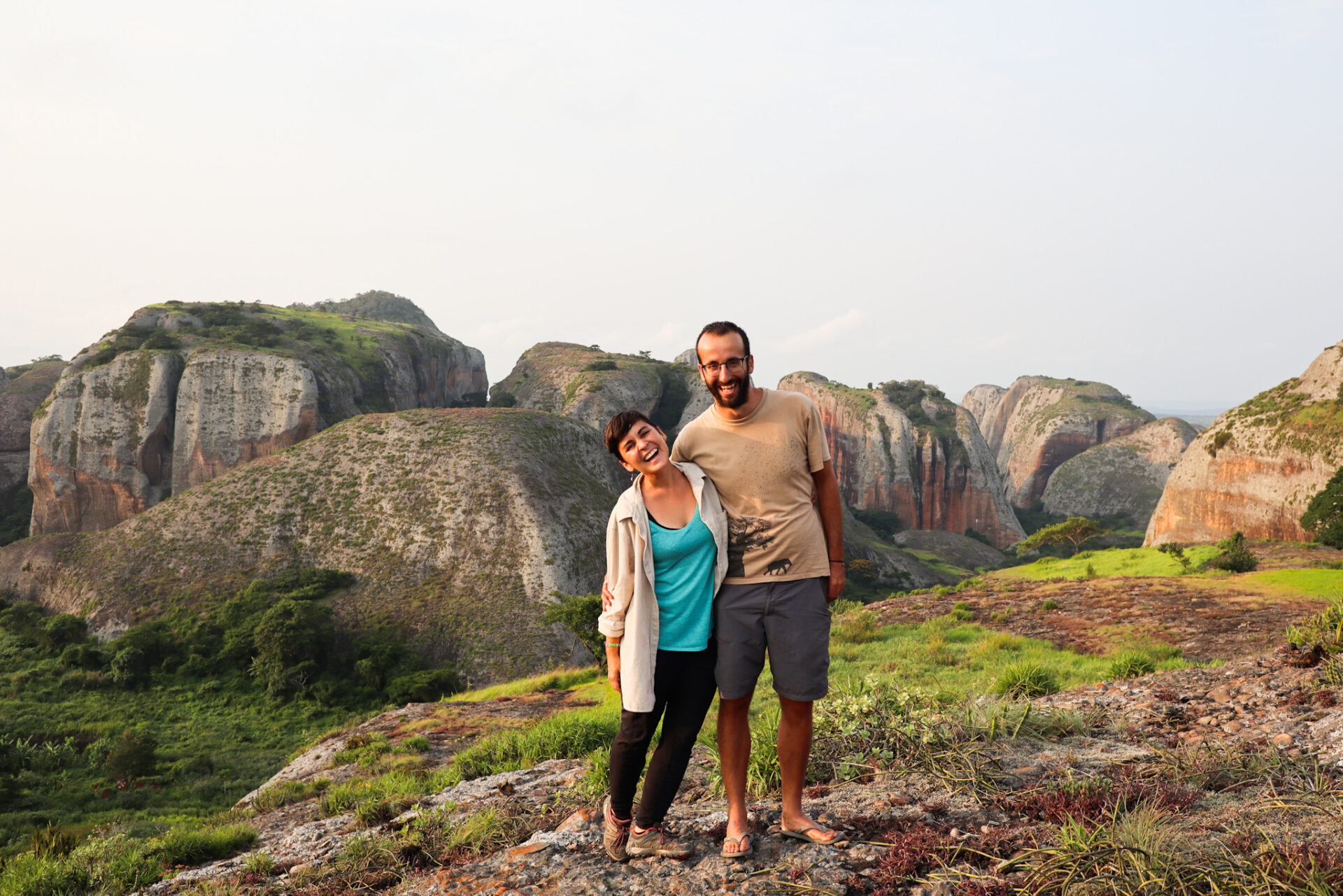



















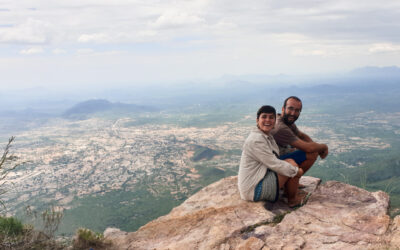
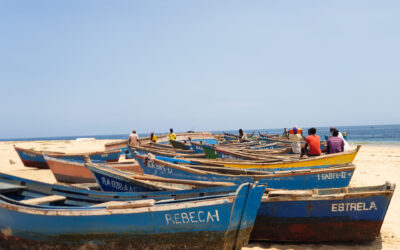
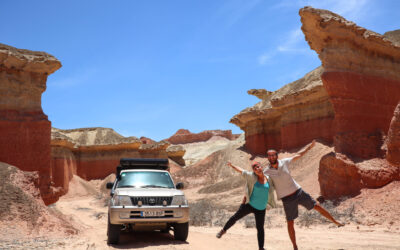
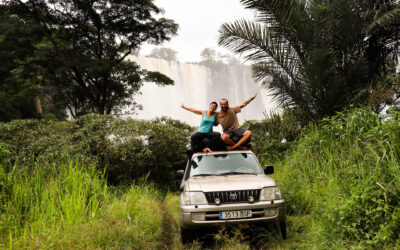
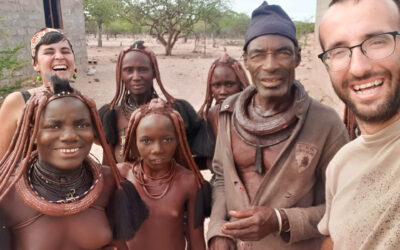
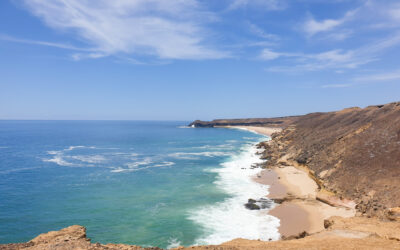
0 Comments